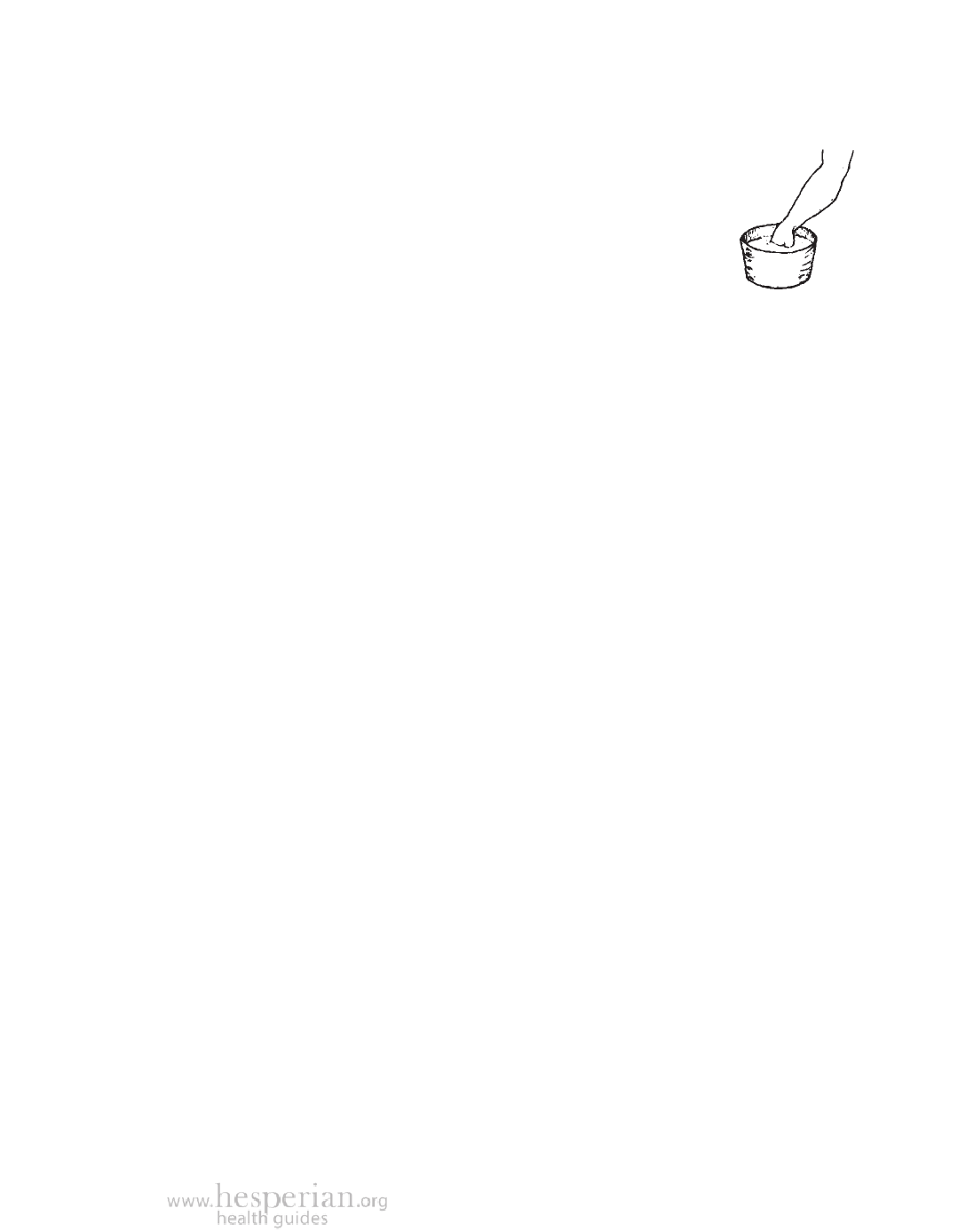
Treating Burns 555
Treating Burns
For any burn:
• Stop the burning by putting the burned part in cool water at
once. Continue to cool the burn for at least 20 minutes.
• Relieve pain with aspirin or other pain medicine.
• Prevent shock (see page 556).
For minor burns, no other treatment is needed.
For chemical burns, radiation burns, electrical burns, and burns that cause
blisters (2nd degree burns):
• DO NOT remove anything stuck to the burn.
• DO NOT apply lotions, fats, or butter.
• DO NOT break blisters.
• DO NOT remove loose skin.
• DO NOT put anything on a chemical burn.
• DO immediately wash away any chemicals from the burn with clean water.
• DO cover the burned area with wet sterile dressings (such as a clean gauze
bandage) if possible.
• DO wash gently with cool, clean water and a mild soap if blisters are
broken. Only leave the burn uncovered if you are in a very clean area,
where there are no insects, dust, or chemical fumes.
• DO get rid of clothing that may be contaminated by chemicals, or wash the
clothing separately from other clothes.
• DO use honey to cover a minor burn. Honey can prevent and control
infection and speed healing. Gently wash off the old honey and put on new
honey at least twice a day.
Then take the person to a health worker or hospital as soon as possible.
Take the person to a hospital if you think they have burned their airway.
Signs include:
• burns around the mouth or nose, or burns inside the mouth.
• mental confusion, unconsciousness, or coughing a lot from inhaling smoke.
Also, take a person to the hospital who has serious burns on the face, eyes,
hands, feet, or genitals.
Any person who is been badly burned can easily go into shock (see the next
page) because of combined pain, fear, and the loss of body fluids from the
oozing burn. Comfort and reassure the person, ease pain, treat shock, and give
plenty of liquids.
A Community Guide to Environmental Health 2012